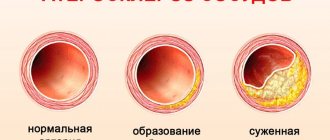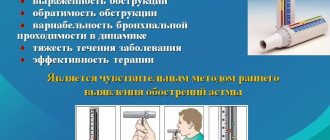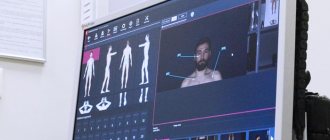The state of traumatic shock is a dangerous manifestation of complications after any type of injury.
First aid for traumatic shock must be provided immediately, since this condition causes irreversible consequences in the body and often leads to the death of the victim.
In case of traumatic shock, urgent hospitalization is required, since medical intervention is necessary to relieve it.
Even with minor injuries, this condition occurs in 3% of victims. If the injuries are extensive and accompanied by severe external or internal bleeding, open or closed fractures, the rates reach 15%. Moreover, the percentage of deaths due to traumatic shock is very high, reaching more than half of all recorded cases.
Reasons for development
The occurrence of this condition is associated with two main factors - pain and blood loss. The more pronounced they are, the worse the health and prognosis for the victim will be. The patient does not realize the presence of a threat to life and cannot even provide first aid to himself. This is precisely why this pathology is especially dangerous.
Any severe injury can cause extreme pain, which is extremely difficult for a person to cope with on his own. How does the body react to this? He is trying to reduce the perception of unpleasant sensations and save his life. The brain almost completely suppresses the functioning of pain receptors and increases the heart rate, increases blood pressure and activates the respiratory system. This requires a huge amount of energy, the supply of which is quickly depleted.
Scheme
After the disappearance of energy resources, consciousness slows down, pressure drops, but the heart continues to work with all its might. Despite this, blood does not circulate well through the vessels, which is why most tissues lack oxygen and nutrients. The kidneys begin to suffer first, and then the functions of all other organs are disrupted.
The following factors can further worsen the prognosis:
- Blood loss . Reducing the amount of blood circulating through the vessels will lead to a greater drop in pressure in a short period of time. Often, severe blood loss with the development of a state of shock is the cause of death;
- Crash syndrome . The softening or crushing of tissues leads to their necrosis. Dead tissues are the strongest toxins for the body, which, when released into the blood, poison the victim and worsen his well-being;
- Blood poisoning/sepsis . The presence of a contaminated wound (due to a gunshot wound, when wounded by a dirty object, after soil gets on the wound, etc.) is a risk of dangerous bacteria entering the blood. Their reproduction and active life can lead to abundant release of toxins and disruption of the functions of various tissues;
- State of the body . The body's defense systems and ability to adapt vary from person to person. Any shock is a great danger for children, the elderly, people with severe chronic illness or with persistently weakened immunity.
The state of shock develops rapidly, it disrupts the functioning of the entire body and often ends in death. Only timely treatment can improve the prognosis and increase the victim’s chances of life. And in order to provide it, it is necessary to promptly recognize the first signs of traumatic shock and call an ambulance (ambulance) team.
Pathogenesis
The pathogenesis of traumatic shock can be represented as follows: a deficiency of circulating blood and plasma due to blood loss and the release of the liquid part of the blood into the tissue, which leads to a decrease in venous return and a decrease in the stroke volume of the heart with the development of changes in vital organs and disruption of their function.
The trigger for any shock is the discrepancy between the volume of circulating blood and the volume of the vascular bed. As a result, the pressure decreases, to which the baroreceptors of the vascular wall react. Impulses from them enter the brain and the sympathoadrenal system is activated: adrenaline and norepinephrine and accumulate in them. Catecholamines , affecting the heart and blood vessels, cause increased frequency and intensification of heart contractions, vascular spasm (skin, kidneys, gastrointestinal tract). Centralization of blood circulation occurs. Catecholamines do not affect the blood vessels of the brain. This mechanism maintains pressure at a sufficient level until the supply of catecholamines is exhausted. These phenomena correspond to the erectile phase of shock.
When catecholamine reserves are depleted, the second phase of shock (torpid) develops. All spasmodic vessels lose their tone (dilate) and the cardiac output decreases. By this time, non-oxidized products have accumulated in the damaged tissues, which enter the bloodstream, which worsens the situation. , multiple organ failure quickly develops .
Symptoms
All the diverse manifestations of pathology can be reduced to 5 main signs that reflect the work of the whole organism. If a person has a serious injury and these symptoms, the likelihood of a state of shock is extremely high. In this case, you should not hesitate to provide first aid.
Typical clinical manifestations include:
Change of consciousness
In most cases, consciousness goes through 2 stages during the development of this state. In the first (erectile) stage, the person is very excited, his behavior is inappropriate, his thoughts “jump” and do not have a logical connection. As a rule, it does not last long - from a few minutes to 1-2 hours. After this, the second stage begins (torpid), during which the victim’s behavior changes significantly. He becomes:
- Apathetic . Everything that happens around a person practically does not bother him. The patient may not respond or respond poorly to verbal appeals, pats on the cheeks, changes in the environment and other stimuli;
- Adynamic . The victim does not change his body position or tries extremely sluggishly to make any movement;
- Emotionless . If the patient’s speech is preserved, he communicates in monosyllables, without intonation or facial expressions, and is absolutely indifferent.
These two stages have one thing in common – the inability to adequately assess the presence of serious damage to oneself and a threat to one’s life. Therefore, he needs the help of people around him to call a doctor.
Increase in the number of heart contractions (HR)
Until the last minute of life, the heart muscle tries to maintain sufficient blood pressure and blood supply to vital organs. That is why the heart rate can increase significantly - in some patients it can reach 150 or more beats/minute, with the norm being up to 90 beats/min.
Breathing problems
Since most tissues lack oxygen, the body tries to increase its supply from the environment. This leads to an increase in breathing rate and it becomes shallow. With a significant deterioration in health, it is compared to the “breath of a hunted animal.”
Reduced blood pressure (BP)
The main criterion of pathology. If, against the background of a severe injury, the numbers on the tonometer drop to 90/70 mmHg. and less - this can be considered the first sign of vascular dysfunction. The more pronounced the drop in blood pressure, the worse the prognosis for the patient. If the lower pressure figure drops to 40 mm Hg, the kidneys stop working and acute renal failure occurs. It is dangerous due to the accumulation of toxins (creatinine, urea, uric acid) and the development of severe uremic coma/urosepsis.
Metabolic disorder
The manifestations of this syndrome are quite difficult to detect in the victim, however, it is it that often leads to death. Since almost all tissues experience energy deficiency, their work is disrupted. Sometimes these changes become irreversible and lead to failure of various organs of the hematopoietic, digestive and immune systems, and kidneys.
List of sources
- Bagnenko S. F., Lapshin V. N., Shah B. N. Hemodynamic depression in victims with combined trauma in the acute period of traumatic illness is the basis for subsequent hypoxic changes and reperfusion injuries // Efferent Therapy, 2004. Vol. 1, No. 5 . pp. 23–34.
- Shestopalov A. E., Pasko V. G. Volume replacement therapy for acute blood loss in victims with severe combined trauma // Difficult Patient. 2005. No. 4. pp. 17–23.
- Gural K.A., Klyuchevsky V.V., Dambaev G.Ts. Human traumatic shock // International Journal of Experimental Education. – 2011. – No. 12. – P. 15-16.
- Singaevsky, A.B. Current problems of modern severe trauma // Abstracts of the All-Russian Scientific Conference. - St. Petersburg, 2001. - pp. 106-107.
- Sheiko V.D. Surgery of injuries during polytrauma in peacetime and wartime / Textbook. — Poltava ASMI LLC. — 2015. 558 p.
Classification
How to determine how dangerous a person’s condition is and roughly navigate treatment tactics? For this purpose, doctors have developed degrees that differ in the level of blood pressure, heart rate, degree of depression of consciousness and breathing. These parameters can be quickly and fairly accurately assessed in any setting, which makes determining the degree a fairly simple process.
The modern classification according to Keith is presented below:
I (mild) Depressed, however, the patient makes contact. Answers briefly, without emotion, with virtually no facial expressions. Shallow, frequent (20-30 breaths per minute), easily identified. Up to 9090-10070-80
| Degrees | Degree of consciousness | Breathing changes | Heart rate (bpm) | Blood pressure (mm.Hg) | |
| Syst. (top on the tonometer) | Diast. (lower on the tonometer) | ||||
| I (light) | Oppressed, however, the patient makes contact. He answers briefly, without emotion, with virtually no facial expressions. | Shallow, frequent (20-30 breaths per minute), easily identified. | Up to 90 | 90-100 | 70-80 |
| II (moderate) | The victim responds only to a strong stimulus (loud voice, pat on the face, etc.). Contact is difficult. | Very superficial, respiratory rate more than 30. | 90-119 | 70-80 | 50-60 |
| III (severe) | The patient is unconscious or in complete apathy. He does not respond to any stimuli. The pupils practically do not constrict in the light. | Breathing is almost imperceptible, very shallow. | More than 120 | Less than 70 | Less than 40 |
In old monographs, doctors additionally identified IV or extremely severe degree, but at present, this is considered inappropriate. IV degree is pre-agony and the beginning of dying, when any ongoing treatment becomes useless. It is possible to achieve a significant effect from therapy only in the first 3 stages of the pathology.
Additionally, doctors divide traumatic shock into 3 stages, depending on the presence of symptoms and the body's response to treatment. This classification also helps to preliminarily assess the threat to life and the likely prognosis.
Stage I (compensated). The patient maintains normal/high blood pressure, but there are typical signs of pathology;
II (decompensated). In addition to a pronounced decrease in pressure, dysfunction of various organs (kidneys, heart, lungs and others) may occur. The body responds to the treatment and with the correct algorithm of assistance, it is possible to save the life of the victim;
III (refractory). At this stage, any therapeutic measures are ineffective - the vessels cannot maintain the necessary blood pressure, and the work of the heart is not stimulated by pharmaceuticals. In the vast majority of cases, refractory shock ends in death.
It is quite difficult to predict in advance which stage a patient will develop - it depends on a large number of factors, including the condition of the body, the severity of injuries and the volume of treatment measures.
Clinical death
If a person is unconscious, the first thing to do is make sure that it is not fainting, but clinical death.
Signs of clinical death:
- no breathing;
- no pulse;
- pupils do not react to light.
Important! If clinical death occurred more than 3 minutes ago, resuscitation efforts may no longer help. They can be performed maximum within 30-50 minutes. Try to involve another eyewitness, if any.
The first step is to slightly throw your head back and raise your legs. Unfasten your belt, buttons and loosen your tie.
First aid
What determines whether a person will survive or die when this pathology develops? Scientists have proven that the timeliness of first aid for traumatic shock is of greatest importance. If it is provided promptly and the victim is taken to the hospital within an hour, the likelihood of death is significantly reduced.
We list the actions that can be performed to help the patient:
- Call an ambulance . This point is of fundamental importance - the sooner the doctor begins full treatment, the higher the patient’s chances of recovery. If the injury occurred in a hard-to-reach area where there is no ambulance station, it is recommended to independently transport the person to the nearest hospital (or emergency room);
- Check airway patency . Any algorithm for helping with shock must include this point. To do this, you need to tilt the victim’s head back, push the lower jaw forward and examine the oral cavity. If there is vomit or any foreign bodies, they need to be removed. When the tongue retracts, it is necessary to pull it forward and attach it to the lower lip. You can use a regular pin for this;
- Stop bleeding , if any. A deep wound, open fracture or crushed limb often causes severe blood loss. If this process is not stopped quickly, the person will lose a large amount of blood, which often causes death. In the vast majority of cases, such bleeding occurs from a large arterial vessel. Applying a tourniquet above the injury is the best first aid you can do. If the wound is located on the leg, then it is applied to the upper third of the thigh, on top of clothing. If the arm is injured - on the upper part of the shoulder. To tighten the vessel, you can use any available materials: a belt, a strong belt, a strong rope, etc. The main criterion for a correct tourniquet is stopping the bleeding. A note should be placed under the tourniquet indicating the time it was applied.
- Pain relief . In a car first aid kit, a woman's handbag or at the nearest pharmacy you can often find various painkillers: Paracetamol, Analgin, Citramon, Ketorol, Meloxicam, Pentalgin and others. It is recommended to give the victim 1-2 tablets of any of the drugs with a similar effect. This will reduce the symptoms somewhat;
- Immobilize the affected limb . A fracture, a tourniquet, a deep wound, a severe injury - this is not a complete list of conditions in which it is necessary to immobilize an arm or leg. To do this, you can use strong materials at hand (boards, steel pipes, a strong tree branch, etc.) and a bandage.
There are many nuances to applying splints, but the main thing is to effectively immobilize the limb in a physiological position and not injure it. The arm must be bent at the elbow joint by 90° and “wound” to the body. The leg should be straight at the hip and knee joints.
If the injury is located on the torso, it is somewhat more difficult to provide quality assistance. It is also necessary to call an ambulance team and anesthetize the victim. But to stop bleeding, it is recommended to apply a tight pressure bandage. If possible, apply a thick cotton pad to the wound site to increase pressure on the vessels.
Fainting
If the victim is breathing and there is a weak pulse, then he has lost consciousness. It is necessary to ensure blood flow to the head.
The best way is to elevate the patient's legs. It is necessary to unfasten the constrictive clothing, wipe the temples and allow ammonia or ammonia to breathe. Additional air flow should also be provided.
If you suspect fainting occurred after alcohol intoxication, then the victim should be placed on his side and the same actions should be performed.
What not to do if you are in shock
- Without a specific purpose, disturb the victim, change the position of his body, or independently try to bring him out of his stupor;
- Use a large number of tablets (or any other dosage forms) with an analgesic effect (more than 3). An overdose of these drugs can worsen the patient’s well-being, cause gastric bleeding or severe intoxication;
- If there is any object in the wound, you should not try to remove it yourself - doctors in the surgical hospital will deal with this;
- Keep the tourniquet on the limb for more than 60 minutes. If there is a need to stop bleeding for more than 1 hour, it is necessary to weaken it for 5-7 minutes. This will partially restore tissue metabolism and prevent the occurrence of gangrene.
Treatment
All victims in a state of shock must be hospitalized in the intensive care unit of the nearest hospital. If possible, emergency teams try to place such patients in multidisciplinary surgical hospitals, where all the necessary diagnostics and required specialists are available. Treatment of such patients is one of the most difficult tasks, since disorders occur in almost all tissues.
The treatment process includes a huge number of procedures that are aimed at restoring the functions of the body. Simplified, they can be divided into the following groups:
- Complete pain relief . Despite the fact that the doctor/paramedic administers some of the necessary drugs while still in the ambulance, in the hospital doctors supplement analgesic therapy. If surgery is necessary, the patient may be placed under full anesthesia. It should be noted that the fight against pain is one of the most important points in anti-shock therapy, since this sensation is the main cause of pathology;
- Restoring the patency of the respiratory tract . The need for this procedure is determined by the patient's condition. In case of breathing disorders, insufficient oxygen inhalation or damage to the trachea, the person is connected to an artificial respiration apparatus (abbreviated as ventilator). In some cases, this requires an incision in the neck with the installation of a special tube (tracheostomy);
- Stop bleeding . The faster the blood leaves the vessels - the lower the blood pressure drops - the more the body suffers. If this pathological chain is interrupted and normal blood flow is restored, the patient's chances of survival are significantly increased;
- Maintaining adequate blood flow . In order for blood to move through the vessels and nourish the tissues, a certain level of blood pressure and a sufficient amount of blood itself is necessary. Doctors help restore hemodynamics by transfusion of plasma-substituting solutions and special medications that stimulate the cardiovascular system (Dobutamine, Norepinephrine, Adrenaline, etc.);
- Restoring normal metabolism . While the organs are in “oxygen starvation,” metabolic disorders occur in them. To correct metabolic disorders, doctors can use glucose-saline solutions; vitamins B1, B6, PP and C; albumin solution and other medicinal measures.
If the above goals are successfully achieved, a person’s life ceases to be at risk. For further treatment, he is transferred to the ICU (intensive care ward) or to a regular inpatient department of the hospital. In this case, it is quite difficult to talk about the timing of treatment. It can range from 2-3 weeks to several months, depending on the severity of the condition.
Diet
The patient’s nutrition depends on his condition and the presence or absence of injuries to the abdominal organs for which surgery was performed. If the victims are in serious condition after burns or in a comatose state due to polytrauma, they are provided with parenteral nutrition, which is included in the complex of treatment measures. Before it is carried out, the victim’s condition must be stabilized and hypoxia eliminated. Therefore, in terminal conditions and shock, only glucose solutions with insulin . After the glucose infusion, an amino acid preparation or protein hydrolysate . Amino acid mixtures: Polyamine , Panamin , Levamin-80 , Levamin-normo , Alvezin , Aminoplasmal , Aminofusin , Moriamin , Trofisan , Okhamin , Friamin . Protein hydrolysates: Casein hydrolysate , Aminofusin , Aminonorm , Aminoplasmal , Aminomel , Aminovenoz , Aminon , Amigen , Izovac .
Then amino acid mixtures or protein hydrolyzate are administered with vitamins, electrolytes and glucose. Fat emulsions are poured together with amino acid mixtures and hydrolysates. They should not be administered with electrolytes, since electrolytes enlarge fat particles, which significantly increases the risk of fat embolism. Fat emulsions include Lipofundin 10% , Intralipid , Lipomul 15% , Lipofundin 15% , Lipifizan 15% . Preparations based on soybean oil are also produced: Lipofundin-S 20% , Emulsan , Venolipid , Infusolipol . The main components of parenteral nutrition are distributed as follows: proteins make up 10-15% of the total daily caloric intake, carbohydrates - 50%, and fats - 35-40%. Vitamins are also an integral component of parenteral nutrition, they are administered separately, and there are also multivitamin complexes for parenteral administration - these are Vitafuzin , Protavit , Soluvit , which contain the daily requirement of essential vitamins.
As the patient's condition improves, the patient is transferred to enteral nutrition with formulas. This is especially indicated if there were abdominal injuries with damage to the gastrointestinal tract or if operations were performed on these organs. Semi-element mixtures are fully balanced with nutrients; proteins are represented by peptides and protein hydrolysates. The most commonly used are Peptamen and Nutrien Elemental - these are specialized medical nutrition products that can be used as the only source of nutrition. Available in powder form, which is diluted with warm boiled water and taken orally.
When switching to a normal diet, the patient must gradually expand the food load, starting with Dietary Table No. 1 with the transition to the standard Diet No. 15 with the physiological content of proteins, fats and carbohydrates, vitamins and minerals.
Particular attention is paid to nutrition in case of burn disease, in which there is an increased breakdown of muscle and visceral proteins. For such patients, the following scheme is used: parenteral nutrition - transition to enteral nutrition - siping (consumption of specialized mixtures in small sips) - transition to specialized diets with a high protein content.
Complications
Shock after an accident, disaster, attack or any other trauma is scary not only because of its symptoms, but also because of its complications. At the same time, a person becomes vulnerable to various microbes, the risk of blockage of blood vessels by blood clots in the body increases tenfold, and the function of the renal epithelium may be irreversibly impaired. Often, people die not from shock symptoms, but due to the development of severe bacterial infections or damage to internal organs.
Sepsis
This is a common and dangerous complication that occurs in every third patient admitted to the intensive care unit after injury. Even with the modern level of medicine, about 15% of patients with this diagnosis do not survive, despite the joint efforts of doctors of various specialties.
Sepsis occurs when a large number of microbes enter the human bloodstream. Normally, blood is completely sterile - it should not contain any bacteria. Therefore, their appearance leads to a strong inflammatory reaction throughout the body. The patient's temperature rises to 39°C and higher, purulent foci appear in various organs, which can disrupt their functioning. Often this complication leads to changes in consciousness, breathing and normal tissue metabolism.
TELA
Damage to tissues and the vascular wall causes the formation of blood clots, which try to close the formed defect. Typically, this protective mechanism helps the body stop bleeding only from small wounds. In other cases, the process of thrombus formation poses a danger to the person himself. It is also necessary to remember that due to low blood pressure and prolonged lying down, systemic stagnation of blood occurs. This can lead to “clumping” of cells in the vessels and increase the risk of pulmonary embolism.
Pulmonary embolism (or PE for short) occurs when the normal state of the blood changes and blood clots enter the lungs. The outcome depends on the size of the pathological particles and the timeliness of the treatment. With simultaneous blockage of both pulmonary arteries, death is inevitable. If only the smallest branches of the vessel are obstructed, the only manifestation of PE may be a dry cough. In other cases, special blood thinning therapy or angiosurgical intervention is necessary to save life.
Hospital pneumonia
Despite thorough disinfection, in any hospital there is a small percentage of microbes that have developed resistance to various antiseptics. This could be Pseudomonas aeruginosa, resistant staphylococcus, influenza bacillus and others. The main targets for these bacteria are patients with weakened immune systems, including shock patients in intensive care units.
Hospital pneumonia ranks first among complications caused by hospital flora. Despite resistance to most antibiotics, this lung disease is mostly treatable with backup drugs. However, pneumonia that develops against the background of shock is always a serious complication that worsens the prognosis for a person.
Acute kidney failure/chronic kidney disease (AKI and CKD)
The kidneys are the first organ to suffer from low arterial pressure. For them to work, a diastolic (lower) blood pressure of more than 40 mmHg is required. If it crosses this line, acute kidney failure begins. This pathology is manifested by the cessation of urine production, the accumulation of toxins in the blood (creatinine, urea, uric acid) and the general serious condition of the person. If intoxication with the listed poisons is not eliminated in a short time and urine production is not restored, there is a high probability of developing urosepsis, uremic coma and death.
However, even with successful treatment of acute renal failure, kidney tissue can become damaged enough to cause chronic kidney disease to develop. This is a pathology in which the organ’s ability to filter blood and eliminate toxic substances deteriorates. It is almost impossible to cure completely, but proper therapy can slow or stop the progression of CKD.
Laryngeal stenosis
Very often, a shock patient needs to be connected to a breathing apparatus or undergo a tracheostomy. Thanks to these procedures, it is possible to save his life in case of impaired breathing, however, they also have long-term complications. The most common of these is laryngeal stenosis. This is a narrowing of one of the sections of the upper respiratory tract, which develops after the removal of foreign bodies. As a rule, it occurs after 3-4 weeks and is manifested by breathing problems, hoarseness and a strong “wheezing” cough.
Severe laryngeal stenosis is treated surgically. With timely diagnosis of the pathology and the normal state of the body, the prognosis for this complication is almost always favorable.
Shock is one of the most severe pathologies that can occur after serious injuries. Its symptoms and complications often lead to the death of the victim or the development of disability. To reduce the likelihood of an unfavorable outcome, it is necessary to provide first aid correctly and transport the person to the hospital as soon as possible. At the medical institution, doctors will carry out the necessary anti-shock measures and try to minimize the likelihood of adverse consequences.
Author:
Selezneva Valentina Anatolyevna physician-therapist
Definition
Traumatic shock is a life-threatening serious condition that occurs as a reaction to an acute injury, which is accompanied by large blood loss and intense pain.
Shock appears at the moment of receiving a traumatic effect in case of pelvic fractures, gunshot, traumatic brain injuries, severe damage to internal organs, in all cases associated with large loss of blood. Traumatic shock is considered a companion to all severe injuries, regardless of their causes. Sometimes it can occur after some time due to additional trauma. In any case, traumatic shock is a very dangerous phenomenon, posing a threat to human life, requiring immediate recovery in intensive care.











